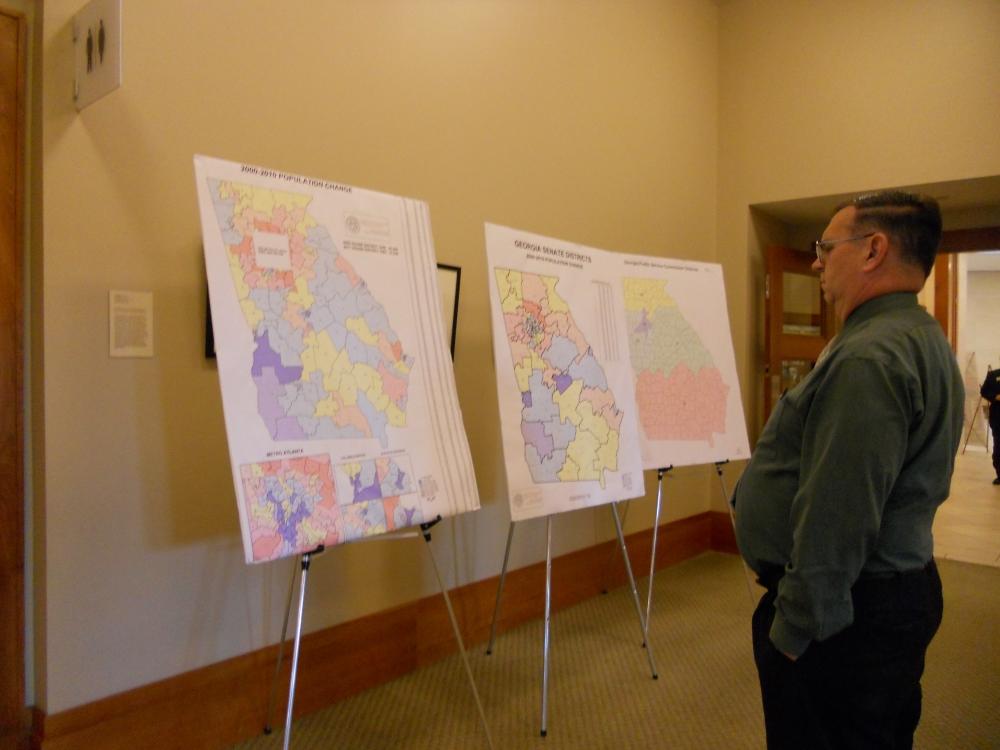
Section Branding
Header Content
Special Session Starts
Primary Content

Legislators return to the state Capitol Monday for a special session to re-draw legislative maps. It will determine the lines of both state legislative and congressional districts. The process will affect how Georgians vote for the next ten years.
To prepare for the once-a-decade redistricting, lawmakers have been drafting preliminary maps based on the newest census data.
They’ll be redrawing 180 statehouse districts and 56 state Senate districts.
Rep. Roger Lane, chair of the House redistricting committee, says it’s all about ensuring each vote counts.
“We have to redraw all of the election districts in the state to reflect the new population numbers so that each district is as equal in population as you can make it so that each person’s vote in one district is equal to someone else’s vote in another district,” he said in an interview.
Lawmakers will also draw 14 congressional districts. Georgia’s population surge last decade earned it another one. It’s likely North Georgia will be its home.
The University of Georgia’s Charles Bullock says the booming area will also fare better than less-populated South Georgia for state districts.
“The region south of the gnat line will lose probably at least one Senate seat, maybe four or so House seats," Bullock said. "They will end up somewhere around metro Atlanta.”
Redistricting can be partisan, and the ruling party often tries to create maps to their favor. Republicans are in charge for the first time in the state’s history.
Senator Jason Carter, a Democrat, is eager to see their approach.
“Is there going to be negotiation, is there going to be discussion once people get a chance to see the maps?" he asked. "Or are the maps going to be presented as sort of a done deal?"
Republican leaders say the process has been fair and transparent. They aim to finish up with redistricting by Labor Day. But that may depend on how willing the Democrats are to accept the maps. And there's already squabbling over so-called majority-minority districts.
Under the federal Voting Rights Act, Georgia must preserve districts where minority voters hold a majority.
Lane, the House redistricting committee chair, says there are 49 such districts in this round, and there ares strict rules for drawing the districts that favor minorities.
“You have to draw the districts in a way that you get up to 53,820 people and you are above 50 percent minority voters but you’re below a certain percentage to keep from packing them all into a few districts,” he said.
Democrats are already accusing them of combining districts to eliminate white Democrats. They say Republicans aim to divide the parties so that most Republican lawmakers are white, and most Democrats are black.
In an interview last week, House Minority Leader, Rep. Stacey Abrams expressed her concerns.
“The Voting Rights Act is not simply about the number of districts with majority-minority populations," she said. "It’s about the ability of minorities to exercise electoral power. And that electoral power is diminished if by eliminating White Democrats, you result in the elimination of racial coalitions.”
Abrams, an Atlanta Democrat, says the law is meant to give minority voters a wider choice of candidates.
Tags: legislature, Voting Rights Act, special session, redistricting, bonner
Bottom Content

